Welcome to the Yamaha Outboard Gauges Manual, your comprehensive guide to understanding and utilizing Yamaha’s dashboard instruments for optimal boat performance and safety.
1.1 Overview of Yamaha Outboard Gauges
Yamaha outboard gauges are essential components for monitoring engine performance and vital systems. They provide real-time data on fuel level, oil pressure, temperature, and voltage, ensuring safe and efficient boat operation. Available in both analog and digital formats, these gauges are designed to be user-friendly and durable. Digital gauges, such as the CL7 Display, offer advanced features like customizable screens and integration with NMEA 2000 networks. Proper installation and setup of these gauges are crucial for accurate readings and optimal functionality. This section introduces the key aspects of Yamaha outboard gauges, highlighting their importance for maintaining engine health and enhancing the boating experience.
1.2 Importance of Proper Gauge Installation and Setup
Proper installation and setup of Yamaha outboard gauges are critical for accurate performance monitoring and safe boat operation. Incorrect installation can lead to misleading readings, potentially causing mechanical issues or safety hazards. Ensuring gauges are correctly calibrated and connected guarantees precise data on fuel levels, oil pressure, and temperature. Proper setup also enables seamless integration with other systems, such as NMEA 2000 networks, enhancing overall boat functionality. Additionally, correct installation prevents electrical malfunctions and ensures compliance with manufacturer guidelines. By following the manual’s instructions, users can optimize their boating experience, maintain engine health, and avoid costly repairs. Accurate gauge function is vital for reliability and safety.
1.3 Key Features of Yamaha Outboard Gauges
Yamaha outboard gauges are designed to provide essential monitoring and control features for optimal boat performance. They include multi-function displays, real-time data on fuel levels, oil pressure, temperature, and battery voltage. Advanced models offer customizable display modes, alarms, and integration with NMEA 2000 networks for seamless connectivity. The gauges are built with durable materials to withstand marine environments and ensure long-term reliability. Additionally, they support advanced sensors for speed, RPM, and trim/tilt monitoring, giving users comprehensive insights into engine performance. These features enhance safety, efficiency, and overall boating experience, making Yamaha gauges a crucial component of modern outboard systems. They are user-friendly and adaptable to various vessel setups.
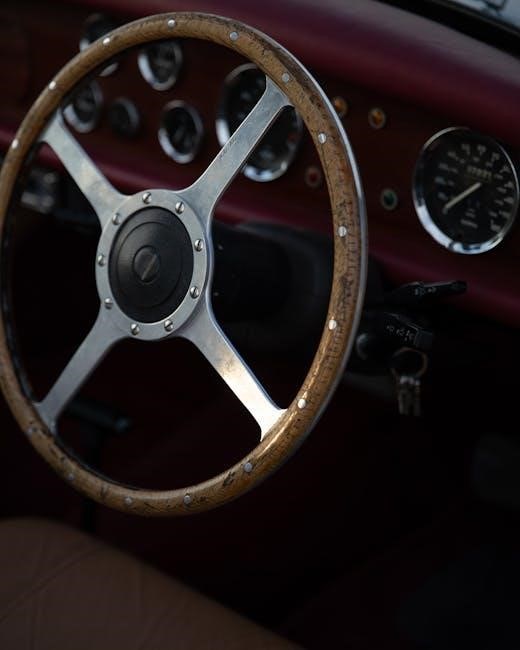
Pre-Installation Requirements
Verify compatibility with your Yamaha outboard model, gather tools, and ensure safety by disconnecting the battery. Proper mounting locations are crucial for optimal viewing and functionality.
2;1 Compatibility Check for Yamaha Outboard Models
Ensure your Yamaha outboard model is compatible with the gauges by referring to the official manual or Yamaha’s website. Compatibility varies by engine year and type.
2.2 Tools and Materials Needed for Installation
To install Yamaha outboard gauges, you’ll need a set of tools and materials. Start with basic tools like screwdrivers, pliers, and wrenches for mounting and wiring. A multimeter is essential for checking electrical connections. Ensure you have marine-grade wiring, connectors, and a power supply compatible with your system. Additional materials include silicone sealant for waterproofing and mounting hardware like brackets and screws. For digital gauges, a configuration cable may be required. Always refer to the manual for specific requirements tailored to your Yamaha model. Proper preparation ensures a smooth and successful installation process.
2.3 Safety Precautions Before Starting the Installation
Before installing Yamaha outboard gauges, ensure all safety precautions are taken. Disconnect the battery to prevent accidental engine start or electrical shock. Use a multimeter to verify power is off. Wear protective gloves and safety glasses when handling tools and wires. Ensure the workspace is clean and well-lit to avoid accidents. Double-check for any fuel leaks or spills near the installation area. Avoid smoking or working near open flames. Consult a professional if unsure about any step. Always follow Yamaha’s specific guidelines for your model to ensure compatibility and safety. Proper preparation prevents potential hazards and ensures a secure installation process.
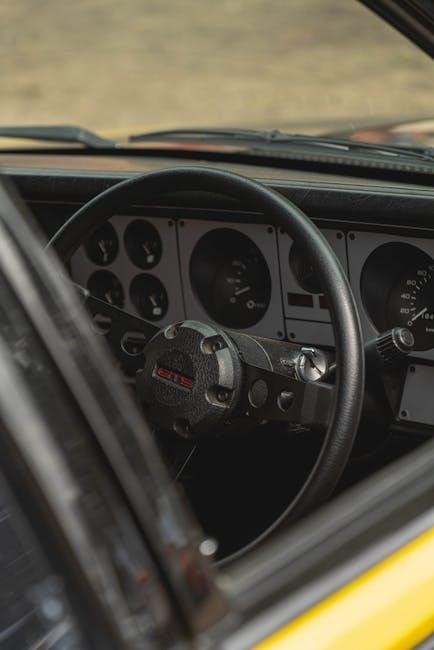
Installation of Yamaha Outboard Gauges
Begin by mounting gauges securely in the dashboard, ensuring optimal visibility. Connect sensors and wiring carefully, following Yamaha’s guidelines for proper installation and functionality.
3.1 Mounting the Gauges in the Dashboard
Mounting Yamaha outboard gauges requires careful planning to ensure optimal visibility and functionality. Choose a location on the dashboard that provides an unobstructed view while operating the boat. Ensure the surface is level and structurally sound to support the gauges. Use the provided mounting hardware, such as brackets or screws, to secure the gauges firmly. Align the gauges neatly, maintaining proper spacing for a clean appearance. After mounting, double-check that all gauges are level and plumb. Finally, power off the system before connecting any wires to avoid electrical issues. Refer to the manual for specific mounting instructions tailored to your Yamaha model.
3.2 Connecting the Gauges to the Outboard Motor
Connecting Yamaha outboard gauges to the motor involves linking sensors and wiring to ensure accurate data transmission. Start by identifying the correct connectors on the motor for speed, RPM, and trim sensors. Attach the sensors securely, following the manufacturer’s guidelines. For models from 2006 onward, utilize the NMEA 2000 network compatibility for seamless integration. Ensure all connections are tight and protected from moisture. Power down the system before connecting to prevent damage. After installation, test the gauges to confirm proper function. Refer to the Yamaha manual for specific wiring diagrams and instructions tailored to your outboard model for a trouble-free setup.
3.3 Wiring and Electrical Connections
Proper wiring and electrical connections are crucial for the accurate functioning of Yamaha outboard gauges. Begin by disconnecting the battery to prevent damage or electrical shocks. Locate the designated wiring harness and connectors for the gauges, ensuring they match the motor’s specifications. Connect the speed sensor, RPM sender, and trim sensor wires to their respective terminals on the motor. Secure all connections firmly to avoid loose wires. Use marine-grade wiring to protect against corrosion and moisture. Refer to the Yamaha manual for specific wiring diagrams and instructions tailored to your outboard model. Double-check all connections before reconnecting the battery to ensure system functionality and safety.
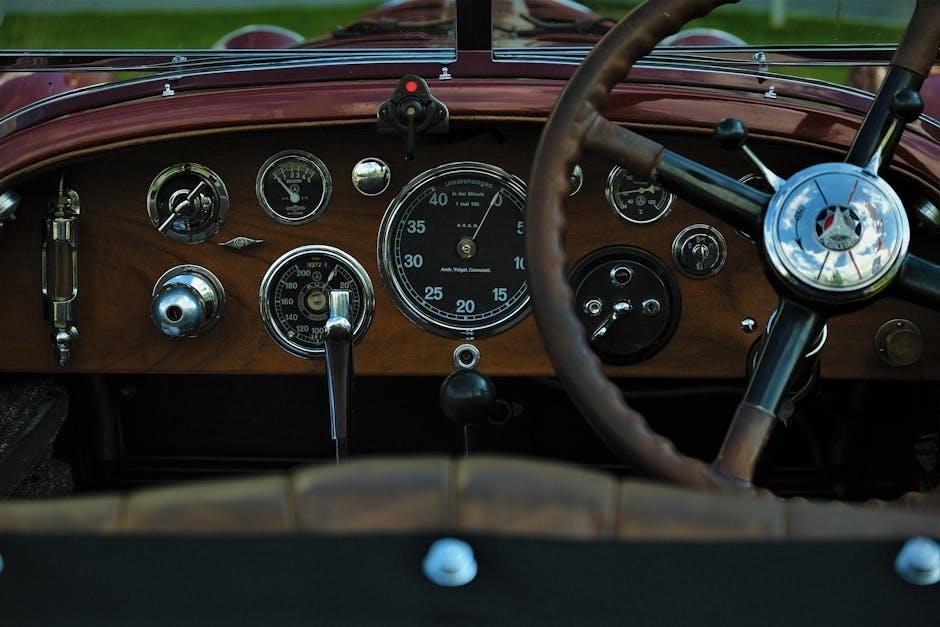
Setting Up the Gauges
Begin by configuring display settings for clarity and visibility. Adjust brightness, contrast, and unit preferences to suit your needs. Calibrate speed and RPM sensors for accuracy, ensuring proper system functionality and reliable readings while operating your Yamaha outboard.
4.1 Configuring the Display Settings
Configuring display settings ensures optimal visibility and functionality. Start by setting dip switches located on the back of the tachometer to customize the trim sender type and speedometer preferences. Adjust brightness and contrast to enhance readability in various lighting conditions. Select preferred units for speed, RPM, and other metrics to match your operational needs. Ensure the display is mounted in a location that provides an unobstructed view while operating the boat. Refer to the official Yamaha manual for detailed instructions on calibration and customization. Proper setup ensures accurate readings and seamless integration with your Yamaha outboard system for a smooth boating experience.
4.2 Calibrating the Speed and RPM Sensors
Calibrating the speed and RPM sensors ensures accurate readings. Begin by setting the dip switches on the tachometer to configure the trim sender type and speedometer settings. Install the speed sensor near the outboard motor, ensuring it is securely fastened and aligned properly. Connect the sensor wires to the appropriate terminals on the gauge. Refer to the Yamaha manual for specific wiring diagrams. After installation, perform a test run to verify accuracy. Adjust the sensor position if necessary to achieve precise readings. Proper calibration is crucial for reliable performance monitoring and ensures your Yamaha outboard operates at peak efficiency.
4.3 Adjusting the Trim and Tilt Sensors
Adjusting the trim and tilt sensors is essential for precise control and optimal performance. Start by accessing the sensors located near the outboard motor. Use the dip switches to configure the trim sender type and tilt settings according to the Yamaha manual. Ensure the sensors are properly aligned with the motor’s movement. After adjustments, test the system by operating the trim and tilt functions to verify smooth operation. Proper alignment and calibration ensure accurate gauge readings and seamless control. Refer to the official Yamaha manual for detailed instructions tailored to your specific model. Regular adjustments maintain peak performance and responsiveness of your outboard system.
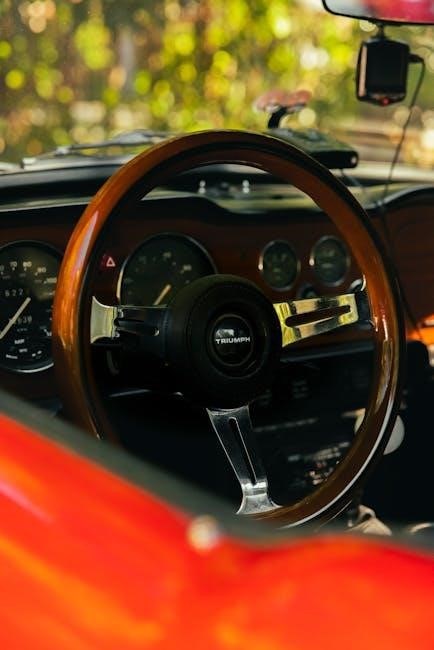
Understanding Gauge Readings
Understanding Yamaha outboard gauge readings is crucial for monitoring fuel levels, oil pressure, temperature, and voltage. Accurate readings ensure safe and efficient operation of your outboard motor.
5.1 Interpreting Fuel Level Indicators
Understanding the fuel level indicator on your Yamaha outboard gauges is essential for monitoring your boat’s fuel status. The gauge typically displays fuel levels as a percentage or through segmented bars. A full tank is indicated by a high reading, while a low reading signals the need to refuel. Pay attention to the transition between green, yellow, and red zones, which indicate optimal, cautionary, and critical fuel levels, respectively. Always check the gauge regularly during operation to avoid running out of fuel. Proper interpretation ensures safe and efficient boating, preventing unexpected shutdowns and potential damage to the engine.
5.2 Monitoring Oil Pressure and Temperature
Monitoring oil pressure and temperature is crucial for maintaining your Yamaha outboard motor’s health. The oil pressure gauge indicates the lubrication system’s functionality, with normal readings typically between 20-60 PSI while running. Low pressure may signal a filter issue or oil level problem, while high pressure could indicate a blocked oil passage. The temperature gauge shows engine heat levels, with ideal operation between 160°F-200°F. Excessive heat may point to cooling system issues or faulty thermostats. Regular checks ensure optimal performance, prevent overheating, and safeguard against engine damage. Always refer to the manual for specific guidelines and address anomalies promptly to maintain reliability and longevity.
5.3 Understanding Voltage and Battery Status
The voltage gauge on your Yamaha outboard system monitors the electrical charge level of your battery and alternator output. A healthy reading typically ranges between 12.5V and 14.5V when the engine is running, indicating proper charging. A drop below 12V suggests a discharged battery, while readings above 14.5V may indicate an overcharging issue. Keep an eye on these levels to prevent electrical system damage. Regular battery maintenance, such as checking terminals and fluid levels, ensures reliable power supply. Addressing voltage fluctuations promptly helps protect sensitive electronics and maintains overall system efficiency, crucial for uninterrupted operation and longevity of your Yamaha outboard components. Always refer to the manual for specific troubleshooting steps.
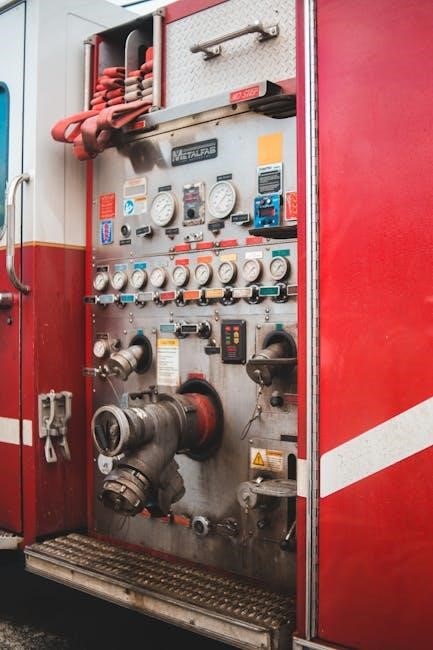
Troubleshooting Common Issues
Identify and resolve common gauge-related problems, such as inaccurate readings, faulty connections, or calibration errors, to ensure reliable performance and accurate data from your Yamaha outboard system.
6.1 Diagnosing Faulty Gauge Readings
Diagnosing faulty gauge readings involves checking connections, testing sensors, and reviewing the manual. Start by ensuring all wires are securely connected and free from corrosion. Next, verify that sensors like speed and coolant pressure are functioning correctly. If issues persist, consult the troubleshooting guide or reset the system. Common problems include loose wires or faulty sensors. Always refer to Yamaha’s official manual for specific diagnostic steps tailored to your model. Regular maintenance and updates can prevent such issues, ensuring accurate and reliable gauge performance for safe and efficient boating experiences. Proper diagnosis is key to resolving errors quickly and effectively.
6.2 Resolving Connectivity Problems
Connectivity issues with Yamaha outboard gauges often stem from loose wires, corroded connections, or incorrect NMEA 2000 network setups. Begin by inspecting all wiring and connectors for damage or corrosion. Ensure the gauges are properly connected to the outboard motor and NMEA 2000 network. Power cycling the system can sometimes resolve temporary glitches. If problems persist, consult the installation manual for specific wiring diagrams. Resetting the sensors or updating software may also restore connectivity. Always verify compatibility with your Yamaha model and ensure all components are correctly configured. Regular maintenance and inspections can help prevent such issues, ensuring seamless communication between gauges and the outboard motor.
6.3 Fixing Calibration Errors
Calibration errors in Yamaha outboard gauges can occur due to incorrect sensor setup or software mismatches. Start by resetting the sensors according to the manual. For speed and RPM sensors, ensure proper alignment and connection to the outboard motor. Recalibrate the trim and tilt sensors by following the step-by-step process outlined in the installation guide. If issues persist, check for software updates or perform a factory reset. Always verify sensor compatibility with your Yamaha model. Consulting the official manual or contacting Yamaha support can provide additional guidance. Regular calibration ensures accurate readings, optimizing your boating experience and maintaining engine performance. Proper setup is key to avoiding future errors.
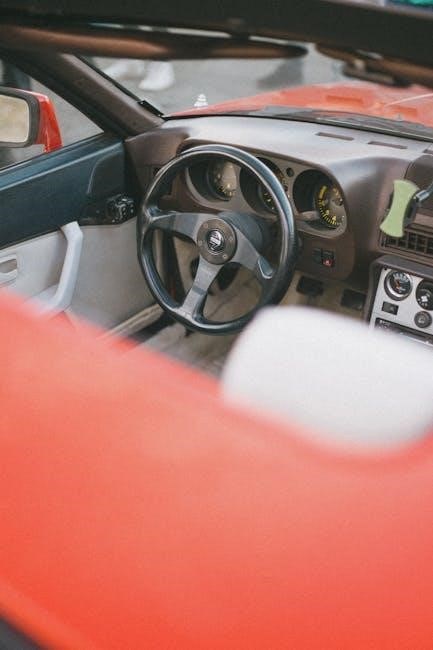
Maintenance and Upkeep
Regularly clean gauges, update software, and maintain batteries to ensure optimal performance. Protect gauges from marine environments and follow Yamaha’s guidelines for long-lasting reliability and accuracy.
7.1 Cleaning and Protecting the Gauges
Regular cleaning is essential to maintain gauge accuracy and visibility. Use a soft, dry cloth to wipe the display and avoid harsh chemicals or abrasive materials. For stubborn marks, a mild detergent diluted in water can be applied gently. Protect gauges from direct sunlight and marine environments by applying a UV-resistant screen protector and ensuring proper sealing. Inspect gauge housings for damage and clean electrical connections to prevent corrosion. Regular maintenance ensures long-term reliability and optimal performance of your Yamaha outboard gauges.
7.2 Regular Software Updates
Keeping your Yamaha outboard gauges updated with the latest software ensures optimal performance and functionality. Regular updates often include bug fixes, feature enhancements, and compatibility improvements. To update your gauges, visit the official Yamaha website or trusted marine parts sites to download the newest software version. Follow the installation manual carefully, typically provided with the update, to avoid any issues. For models like the Yamaha CL7 Display, updates may also improve integration with NMEA 2000 networks. Always back up your settings before proceeding and ensure your system is compatible with the new software. Regular updates help maintain accurate readings and enhance your overall boating experience.
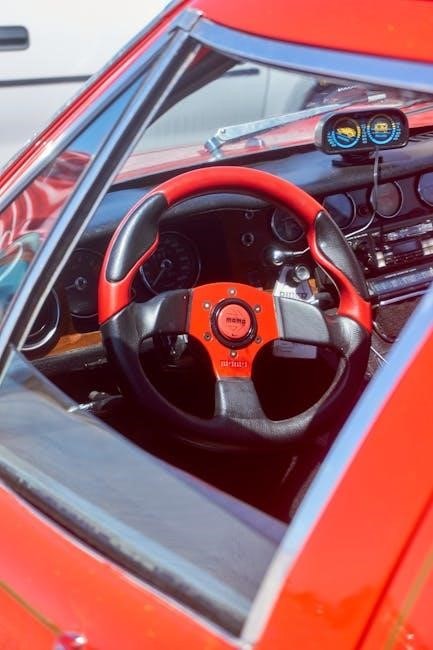
7.3 Battery Maintenance for Gauge Systems
Proper battery maintenance is crucial for ensuring reliable performance of your Yamaha outboard gauges. Regularly inspect the battery terminals for corrosion and clean them if necessary. Always disconnect the battery when performing maintenance or storage to prevent drainage. Charge the battery according to the manufacturer’s instructions, avoiding deep discharges. For extended storage, keep the battery in a cool, dry place and maintain a charge level of 50% to prevent sulfation. Refer to your Yamaha manual for specific guidelines on battery care tailored to your gauge system. A well-maintained battery ensures accurate readings and consistent operation of your Yamaha outboard gauges.

Advanced Features and Customization
Explore advanced features like customizable display modes, alarm settings, and NMEA 2000 integration for enhanced control and compatibility with your Yamaha outboard gauges.
8.1 Customizing Display Modes
Customizing display modes on Yamaha outboard gauges allows users to tailor their dashboard layout for optimal readability. By selecting specific data points such as speed, RPM, or fuel level, boaters can prioritize essential information. The digital displays offer multiple preset modes, including a performance mode for real-time engine data and a navigation mode for trip statistics. Users can also adjust brightness and contrast settings to ensure visibility under varying lighting conditions. This feature enhances the overall boating experience by providing a personalized and intuitive interface, making it easier to monitor critical systems while maintaining focus on the water.
8.2 Setting Up Alarms and Alerts
Setting up alarms and alerts on Yamaha outboard gauges ensures timely notifications for critical system statuses. Users can configure alerts for low fuel levels, high engine temperature, or abnormal oil pressure. Audio-visual signals provide immediate attention, reducing the risk of engine damage. Customizable thresholds allow boaters to set specific parameters tailored to their vessel’s needs. Additionally, the system can be programmed to alert for battery voltage fluctuations or excessive RPM, enhancing safety and convenience. These alerts help maintain optimal engine performance and prevent potential issues, giving users peace of mind while on the water.
8.3 Integrating with NMEA 2000 Networks
Integrating Yamaha outboard gauges with an NMEA 2000 network enables seamless communication between marine electronics. Compatible Yamaha outboard models (2006 and newer) can connect to this standardized protocol, allowing data sharing with devices like GPS, depth sounders, and other onboard systems. This integration simplifies monitoring by consolidating vital information, such as engine performance, fuel levels, and navigation data, on a single display. Proper installation involves connecting the gauges to the NMEA 2000 backbone using compatible cables and adapters. Once connected, users can access real-time data, enhancing navigating efficiency and safety. This feature is essential for modern boating systems, ensuring a connected and user-friendly experience.
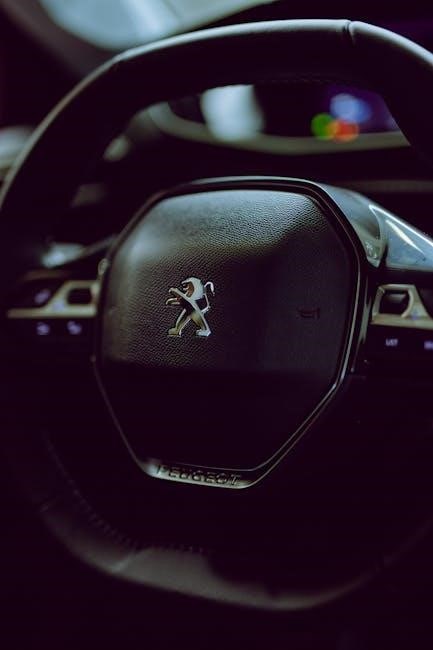
Additional Resources and Support
Access official Yamaha manuals, online forums, and customer support for troubleshooting, downloads, and expert assistance with your outboard gauges setup and operation.
9.1 Downloading the Official Yamaha Manual
The official Yamaha manual is a vital resource for understanding your outboard gauges setup. Visit Yamaha’s official website or trusted marine parts sites to download the PDF version. Ensure you select the correct model year and engine type for accurate instructions. The manual covers installation, operation, and troubleshooting, providing detailed diagrams and step-by-step guides; It’s essential for both novice and experienced users to refer to this document for optimal performance and safety. Regularly check for updates to stay informed about new features or technical improvements.
9.2 Accessing Online Forums and Communities
Online forums and communities are excellent resources for Yamaha outboard gauge-related questions and troubleshooting. Websites like Yamaha’s official forum, marine electronics groups, and social media platforms host discussions where users share experiences and solutions. These communities often include professionals and enthusiasts offering valuable insights. You can find threads on gauge setup, calibration, and maintenance. Additionally, specialized marine electronics forums provide detailed troubleshooting guides and tips for optimizing your Yamaha gauges. Engaging with these communities can help resolve issues quickly and connect you with experts. Always verify information through multiple sources to ensure accuracy and safety.
9.3 Contacting Yamaha Customer Support
For direct assistance with Yamaha outboard gauges, contact Yamaha’s customer support team. Visit the official Yamaha website to find regional contact information, including phone numbers and email addresses. Be prepared to provide your outboard model number and specific details about your gauges for efficient support. Yamaha’s customer service is equipped to address technical inquiries, troubleshooting, and repair needs. Response times are typically prompt, ensuring minimal downtime for your marine activities. This resource is ideal for resolving complex issues or clarifying manual instructions. Utilize this support channel for professional guidance tailored to your Yamaha outboard gauge system.



Leave a Reply
You must be logged in to post a comment.